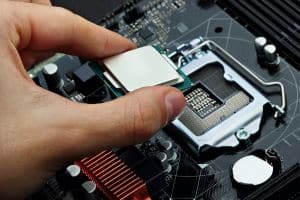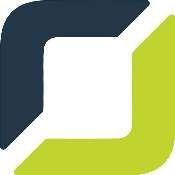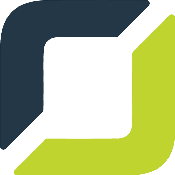The Industrial Internet of Things (IIoT) refers to the integration of internet-connected devices into industrial systems and processes. This system includes using smart sensors, software, and other technologies to gather and analyze data and share it with other connected devices to improve efficiency, productivity, and safety in manufacturing, transportation, and other industrial settings.
Think of it like having a network of smart machines and devices that talk to each other and make decisions on their own to help the factory or industry run more smoothly. It’s an incredible way for organizations to reduce downtime, optimize the use of resources, and improve overall operational performance.
In short, it’s all about getting great results faster by utilizing new technologies and incorporating them into how organizations complete their work. The IIoT is one of several key components that comprise Industry 4.0, a term used to describe the fourth industrial revolution characterized by the integration of advanced technologies such as artificial intelligence, robotics, and the Internet of Things (IoT).
How Does the Industrial Internet Of Things Work?
 The IIoT connects multiple industrial devices and machines to the internet, allowing them to communicate and share data using a combination of hardware and software technologies.
The IIoT connects multiple industrial devices and machines to the internet, allowing them to communicate and share data using a combination of hardware and software technologies.
The Hardware of IIoT
The hardware aspect of IIoT involves using sensors, actuators, and other devices designed to collect data about performance, usage, and the environment. With these devices installed, the equipment can measure a wide range of parameters, such as temperature, pressure, vibration, and more, depending on the type of equipment and the specific application.
By calculating, recording, and communicating key performance indicators, compatible software can review the data and generate smart solutions to improve efficiency and optimize the business on all operational levels.
The Software of IIoT
The software aspect of IIoT includes using specialized software platforms, protocols, and applications to connect these devices and share data. Once the smart sensors measure operational factors, they send them to the software for collecting, processing, and analyzing the data from the sensors. The data is collected and analyzed so organizations may use it to improve industrial equipment’s performance, efficiency, and safety.
For example, organizations can use the data to detect patterns, anomalies, and trends that can indicate a potential problem, like equipment failure. Sharing the probability of catastrophic events such as these equips the user with the knowledge they can use to direct a course of action to address, preventing systems breakdown before they interrupt workflow.
IIoT allows for real-time monitoring, control, and optimization of industrial systems through sensors, software, and other technologies to improve the performance of industrial equipment, reduce downtime and maintenance costs, and enhance the overall productivity and competitiveness of industrial operations.
How Do Businesses Use Industrial Internet Of Things?
 One of the primary ways a business might use IIoT is in problem detection. Operators monitor the data reporting performed by IIoT and analyze it using compatible software, such as the software designed by Orases.
One of the primary ways a business might use IIoT is in problem detection. Operators monitor the data reporting performed by IIoT and analyze it using compatible software, such as the software designed by Orases.
Careful analysis of the metrics provided helps users determine when a problem is on the horizon and assists in intervention before things take a turn. IIoT can detect a wide range of issues and opportunities in industrial systems and processes, depending on the type of equipment and the specific application, including:
- Predictive maintenance: By collecting data on the performance, usage, and environment of industrial equipment, IIoT can help to detect patterns, anomalies, and trends that indicate when equipment is likely to fail. This helps to schedule maintenance before a problem occurs, reducing downtime and increasing the lifespan of the equipment.
- Energy efficiency: IIoT can be used to monitor the energy consumption of industrial equipment and systems, identifying areas where energy is being wasted. By knowing these affected areas, organizations can take steps to improve energy efficiency, reduce costs, and decrease their carbon footprint.
- Quality control: IIoT can monitor the quality of products being produced in a factory, detecting defects or variations in products that may not be visible to the human eye. This helps organizations improve the quality of their products, reduce waste and rework, and increase customer satisfaction.
- Safety: IIoT can be used to monitor conditions in industrial environments, such as temperature, humidity, and toxic gasses. This helps detect conditions that may be dangerous to workers, allowing organizations to take steps to improve safety and protect their employees.
- Inventory management: IIoT can monitor the inventory of raw materials and finished goods in a warehouse, detecting when levels are low and triggering automatic reordering. This helps organizations avoid shortages and improves their ability to fulfill customer orders.
These are just a few examples of the problems and opportunities that IIoT can detect. The specific issues that IIoT detects will depend on the type of equipment and the specific application.
What Industries Are Using Industrial Internet Of Things?
A variety of industries are incorporating IIoT into everyday operations to fully maximize their effectiveness.
Manufacturing
 Manufacturing businesses are seeing significant benefits from implementing IIoT into their operations. The ability to connect industrial equipment to the internet and collect real-time data on performance, usage, and environment is allowing manufacturers to improve efficiency, reduce downtime, and optimize resource usage.
Manufacturing businesses are seeing significant benefits from implementing IIoT into their operations. The ability to connect industrial equipment to the internet and collect real-time data on performance, usage, and environment is allowing manufacturers to improve efficiency, reduce downtime, and optimize resource usage.
Using IIoT, manufacturers can effectively predict when equipment is likely to fail. This knowledge helps organizations to reduce downtime from machine failure, reduce costs associated with repairing catastrophic failure, and overall increase the lifespan of the equipment through predictive maintenance. IIoT can monitor quality assurance and energy consumption as well.
Manufacturing businesses utilize IIoT to track the movement of goods and materials through the supply chain, helping them to optimize inventory levels, reduce lead times, and improve delivery times.
Overall, manufacturers like what IIoT brings to their operations, and many are now making it a key part of their digital transformation strategy.
Healthcare
IIoT is also being used in healthcare to improve patient care and operational efficiency. By connecting medical devices and equipment to the internet, health-care providers can collect real-time data on patient conditions, treatment outcomes, and equipment performance.
IIoT allows doctors and caregivers to monitor patients remotely, letting health-care providers to keep track of patient health status and intervene if anything occurs while they are not physically present. This is especially useful for patients with chronic conditions, such as diabetes or heart disease, who may require frequent monitoring.
IIoT can also be used to improve the efficiency of health-care operations by automating tasks such as patient tracking and inventory management. For example, health-care providers can track the location of equipment and supplies in real-time by using RFID tags, reducing the need for manual inventory checks and saving time.
In addition, organizations can also use IIoT to improve the accuracy of medical diagnoses by analyzing large amounts of patient data and identifying patterns that may not be immediately apparent. This helps to improve patient outcomes and reduces the possibility of misdiagnoses.
IIoT provides various benefits in healthcare, such as improved patient outcomes, better efficiency, and remote monitoring, helping health-care professionals to provide better care while reducing costs for the health-care organization or practice.
Government
 Government agencies are always looking to improve efficiency and reduce costs. For instance, many government agencies and other public organizations are now turning to IIoT to help them achieve these goals.
Government agencies are always looking to improve efficiency and reduce costs. For instance, many government agencies and other public organizations are now turning to IIoT to help them achieve these goals.
One way that government agencies are using IIoT is by incorporating it into their procurement processes. For example, many government agencies now require that vendors include IIoT capabilities in their bids for government contracts. This allows the agency to take advantage of the benefits of IIoT, such as real-time monitoring and control, predictive maintenance, and energy efficiency.
Additionally, government agencies are also using IIoT to improve the delivery of services to citizens. For example, the use of smart city technology helps governments reduce energy consumption, improve traffic flow, and enhance public safety.
Companies working toward getting a government contract will have a distinct competitive advantage by offering IIoT solutions. IIoT inclusion demonstrates their ability to incorporate advanced technology and data-driven solutions in their products and services. It is becoming an increasingly important consideration for companies looking to secure government contracts.
Are IIoT Solutions Right for My Business?
If you want to improve your operations’ efficiency, productivity, and safety, the IIoT will help you achieve these goals and more.
IIoT works at all levels of your organization, from equipment monitoring to goods tracking to even managing your facility’s energy consumption. Hundreds of metrics are recorded by the smart sensors and uploaded to personalized software. The best part is that IIoT requires minimal oversight by human operators. As a result, systems are easy to use and improve efficiency greatly.
By adopting IIoT, you’ll be able to make more informed decisions, improve your operations, and reduce costs while providing a better customer experience. Furthermore, with IIoT, you can stay ahead of the competition and secure a strong position in your industry.
How Can Orases Help?
At Orases, we specialize in custom software development, web development, mobile development, and digital strategy. We also provide services to various industries, such as healthcare, logistics, and education.
Our client-focused approach makes the difference in our results, in which we first understand an organization’s business needs to design and develop personalized solutions to help them reach their goals. So take the first step towards digital transformation and improved business efficiency. Contact Orases today and schedule a consultation to discuss your custom software development needs.





